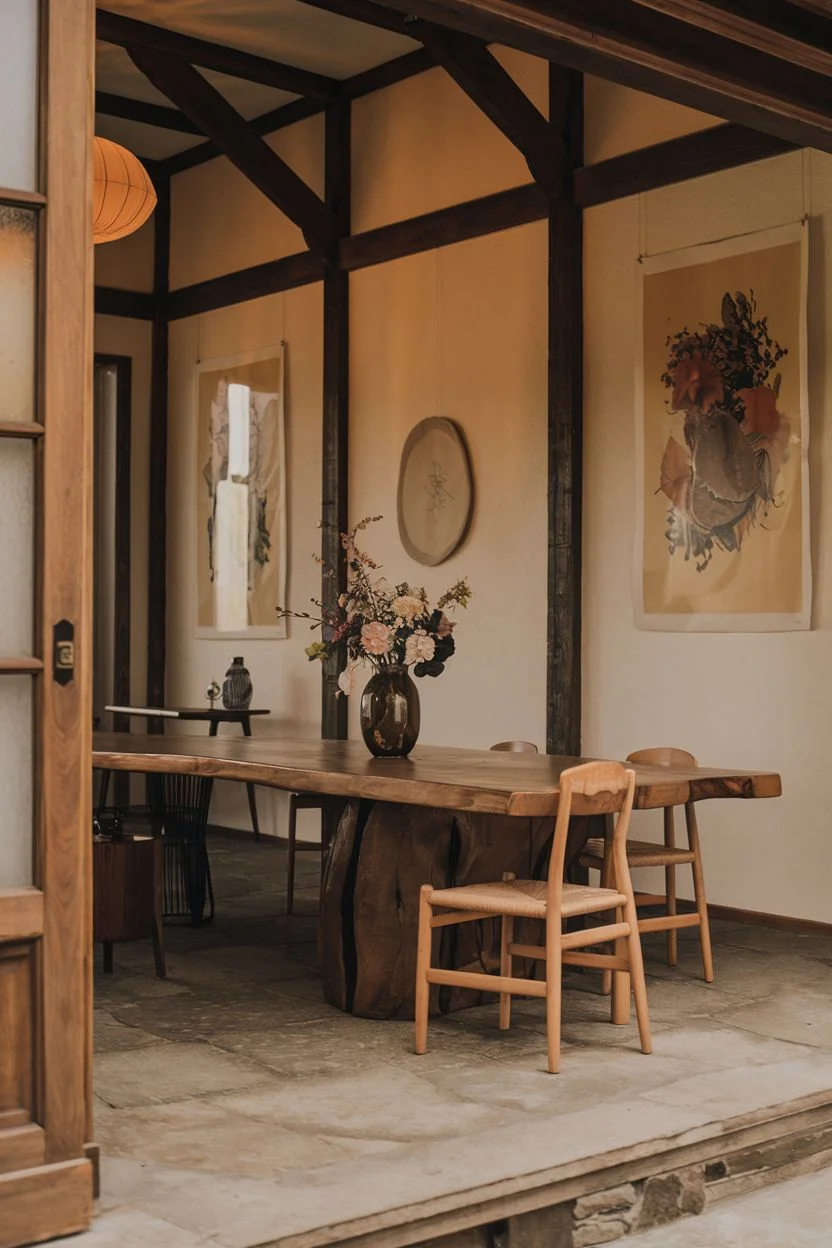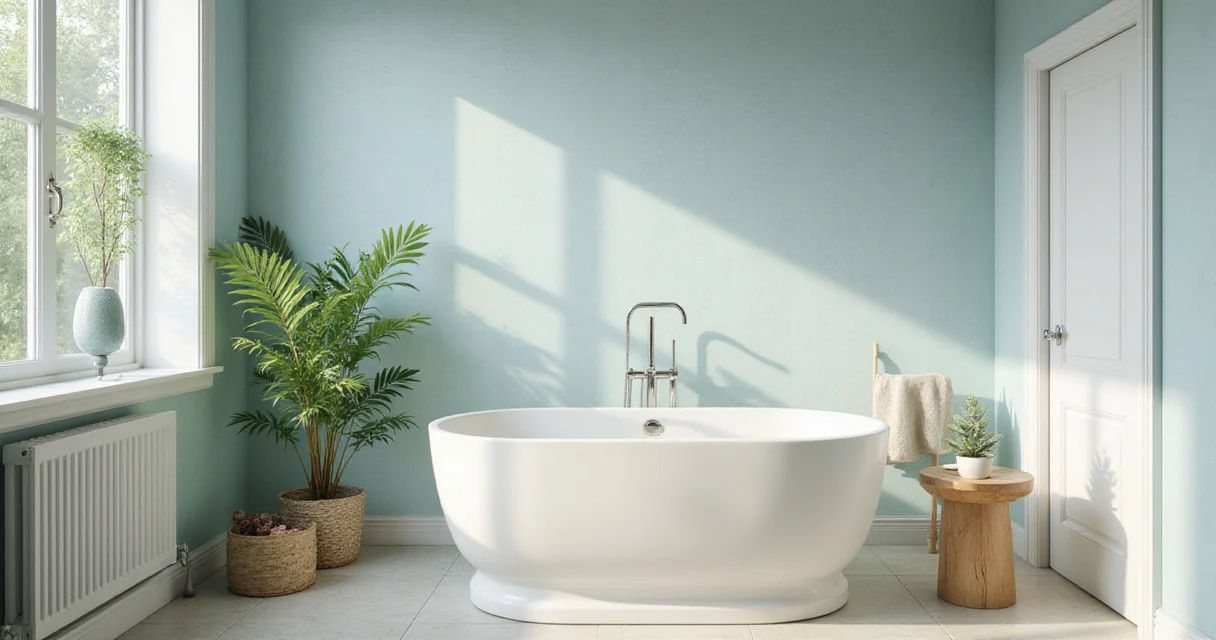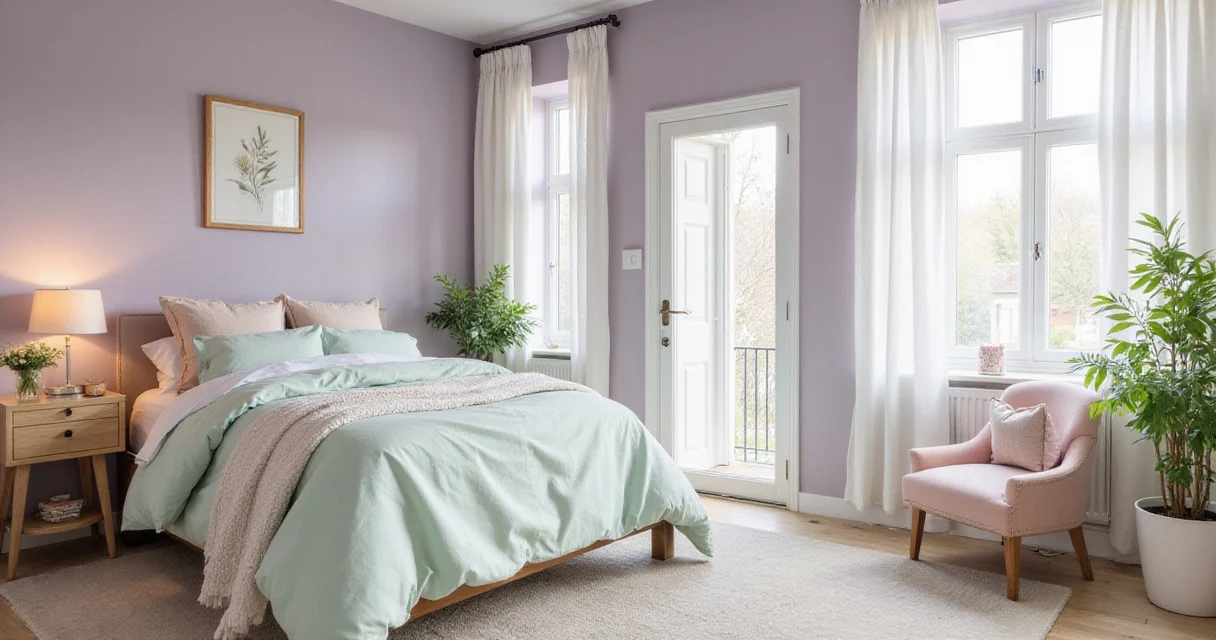The timeless philosophy of Wabi Sabi Dining, inspired by Japanese culture, embraces the beauty found in imperfection, simplicity, and the natural passage of time. Incorporating this aesthetic into your dining space invites a sense of tranquility, authenticity, and warmth—turning everyday meals into serene, mindful experiences.
By embracing natural materials, muted tones, and minimalist design, a Wabi Sabi Dining room transcends functionality to become a peaceful retreat that encourages mindfulness and emotional connection. Rooted in the beauty of imperfection and simplicity, this timeless Japanese-inspired style creates harmony within your home. If you love soulful, earthy aesthetics, you may also enjoy exploring our Boho Living Room ideas for more eclectic and nature-infused inspiration.
1. Tatami Tranquility with Shoji Screens
Embrace Japanese tradition with tatami flooring and shoji screens to define your dining space. A simple wooden table paired with chairs featuring woven seats anchors the room, while a vase with seasonal branches enhances the organic charm.
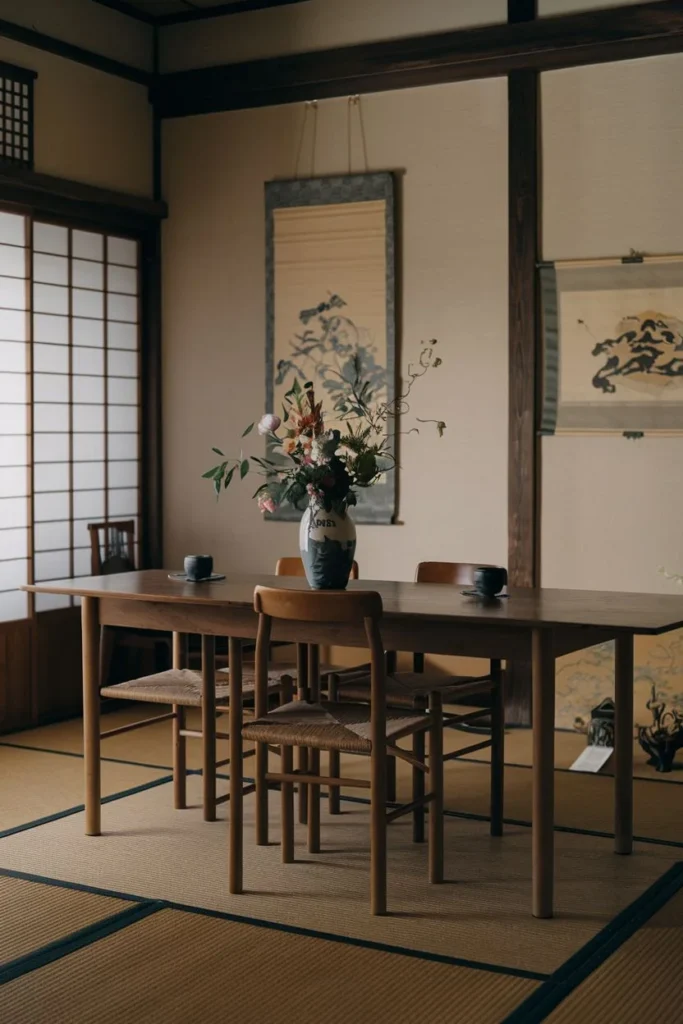
2. Celebrate Raw Materials
Highlight the beauty of natural wood grains with a robust wooden table. Woven chairs and plastered walls add a tactile, earthy feel. Built-in shelves displaying ceramics and vases provide subtle elegance without clutter.
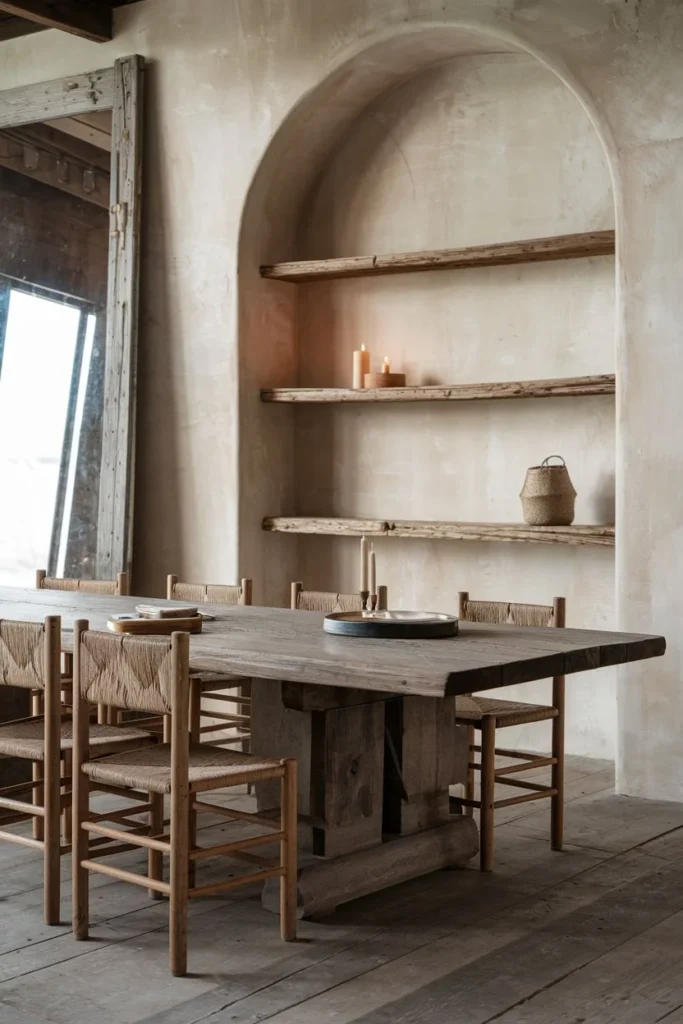
3. Rustic Minimalism with Calligraphy
Pair a dark wooden table with cane-back chairs for a rustic yet refined look. Hang calligraphy scrolls for an authentic Japanese interior design element. Top it off with dried botanicals for a soft, aged touch.

4. Simplicity at its Best
A basic wooden dining set, vintage lighting, and a neutral palette embody minimalist Wabi Sabi Dining design. Shoji screens as window treatments add light diffusion, while a vase and cloth runner bring subtle detail.
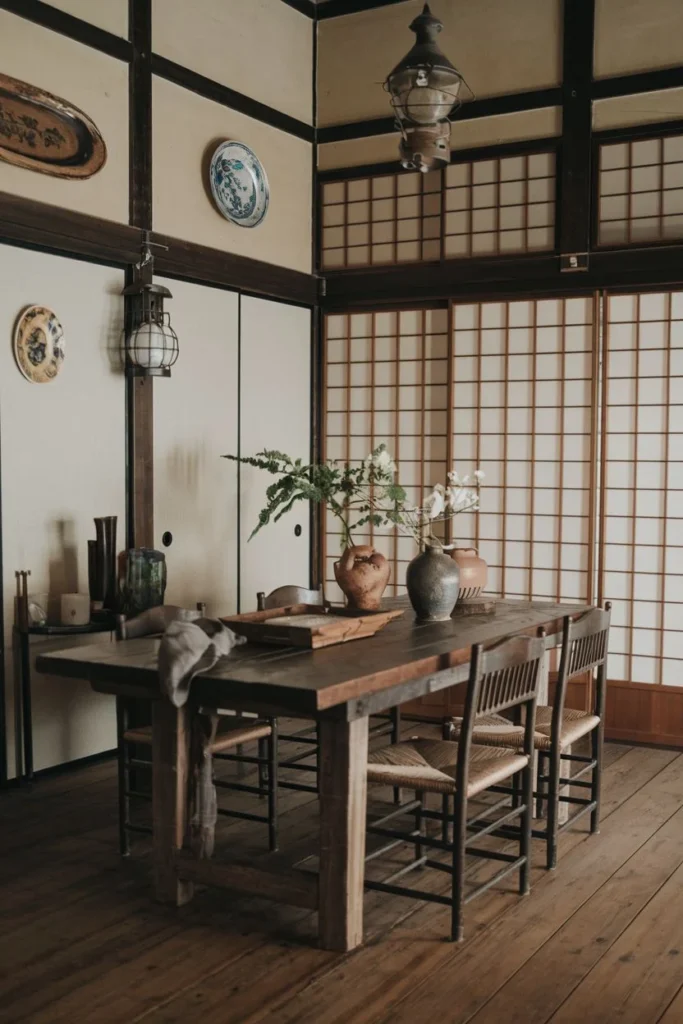
5. Exposed Beams & Textured Surfaces
Let raw wooden beams and textured plaster walls become key features. A live-edge dining table with wicker chairs creates a grounded, tactile dining experience with minimal effort.
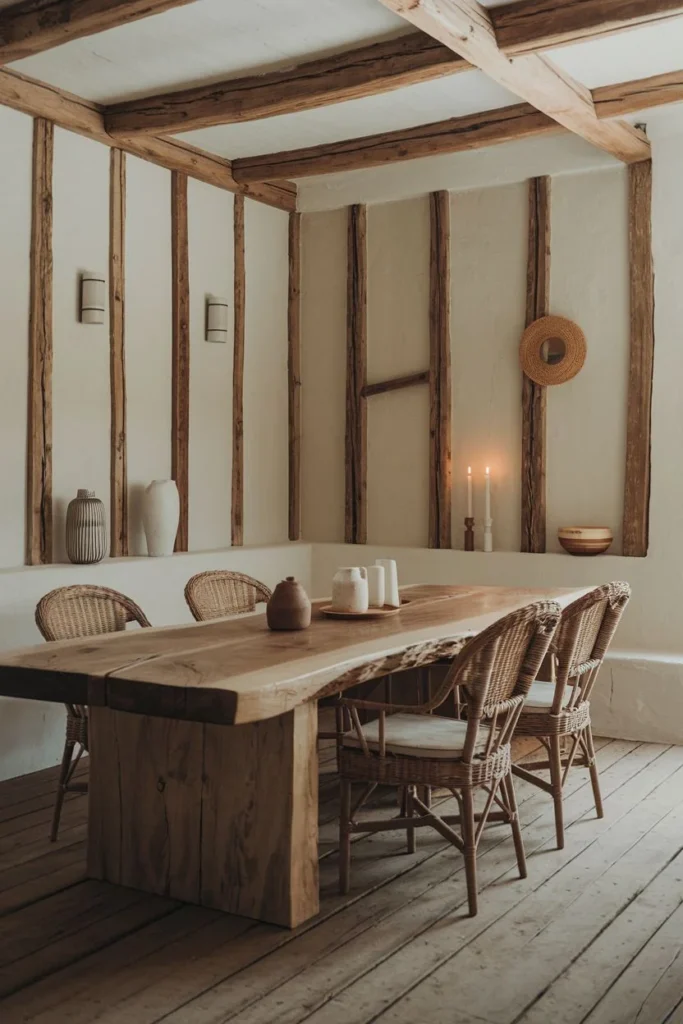
6. Nature-Inspired Outdoor Dining
Design a peaceful patio dining area using stone or concrete flooring, large potted plants, and wooden furniture. Woven lighting fixtures and organic textiles enhance the Wabi Sabi feel while blending indoors with outdoors.
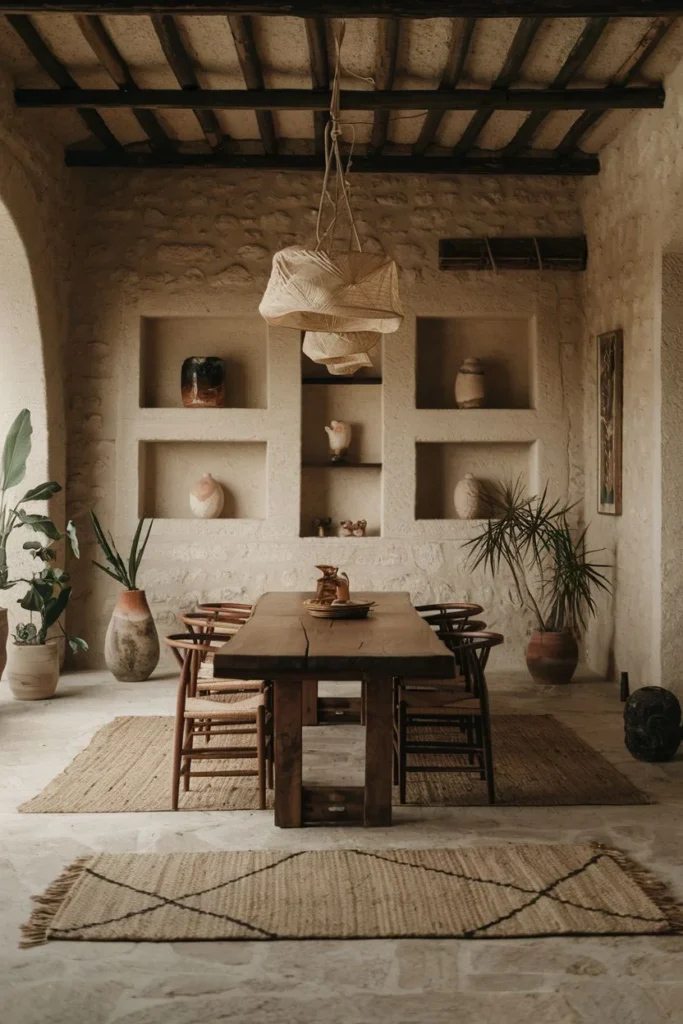
7. Green-Filled Serenity
Incorporate plenty of indoor plants alongside a dark wood table and natural fiber rug. Textile wall hangings and minimal decor create a space that feels both lived-in and effortlessly peaceful.
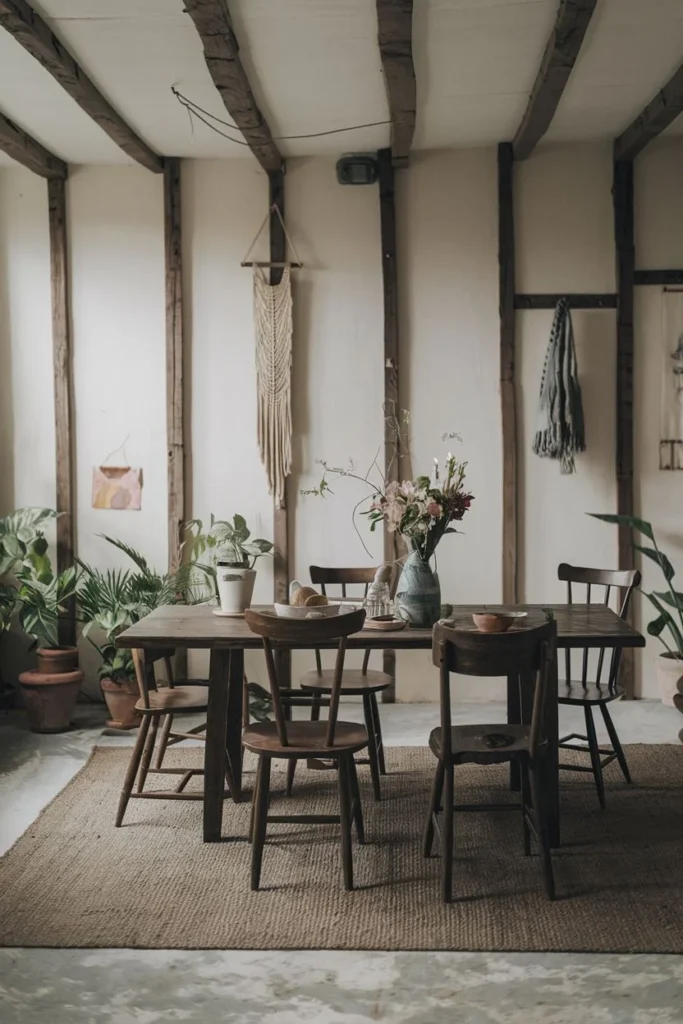
8. Let in the Light
Maximize natural light with large windows and position your wooden table nearby. Shoji screens offer privacy and serenity, while paper lanterns and subtle greenery embody Wabi Sabi interior style.
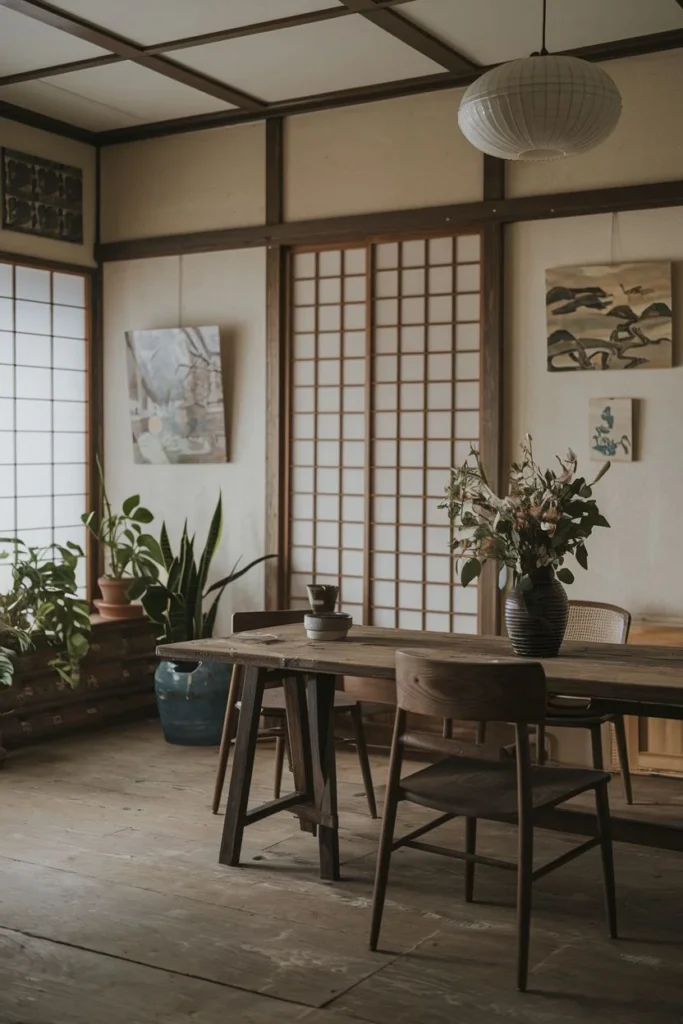
9. Earthy and Rustic
A square wooden table paired with earthenware accessories sets the tone for a grounded dining space. Add wooden cutting boards, potted plants, and vintage lighting for depth and warmth.
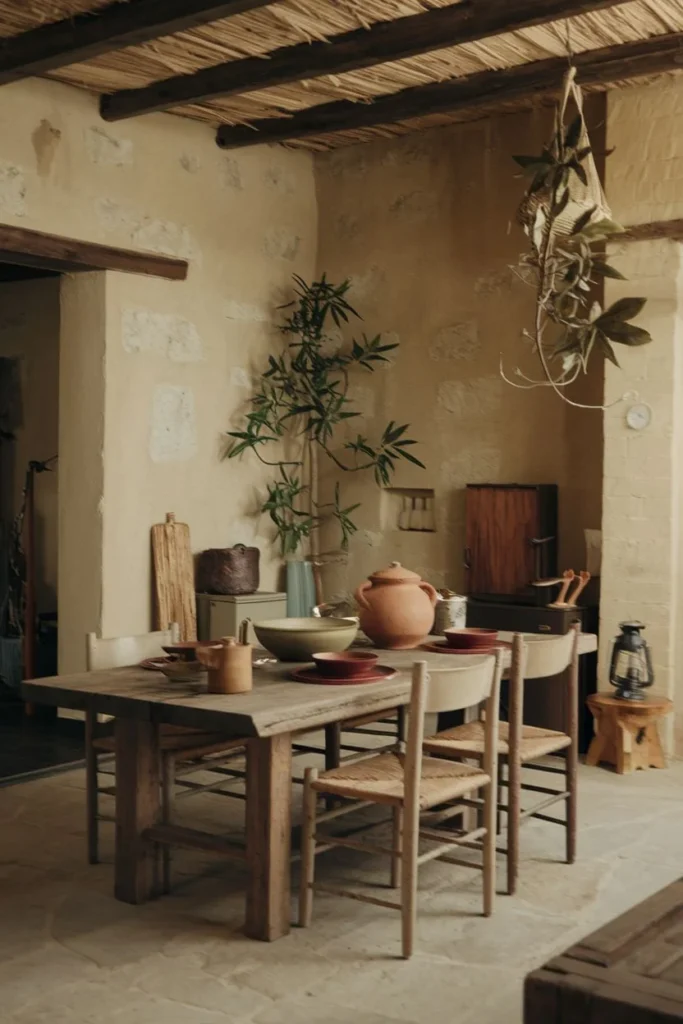
10. Dark Wood Harmony
A dark wood table contrasts beautifully with white shoji screens, creating a calming backdrop. Add a branch in a clay vase, minimalist dinnerware, and lantern lighting for Zen dining room decor.

11. Hanging Garden Vibes
Bring dimension by suspending ferns or trailing plants above a natural wood dining set. Sliding doors with translucent panels and woven textures foster an airy, organic ambiance.
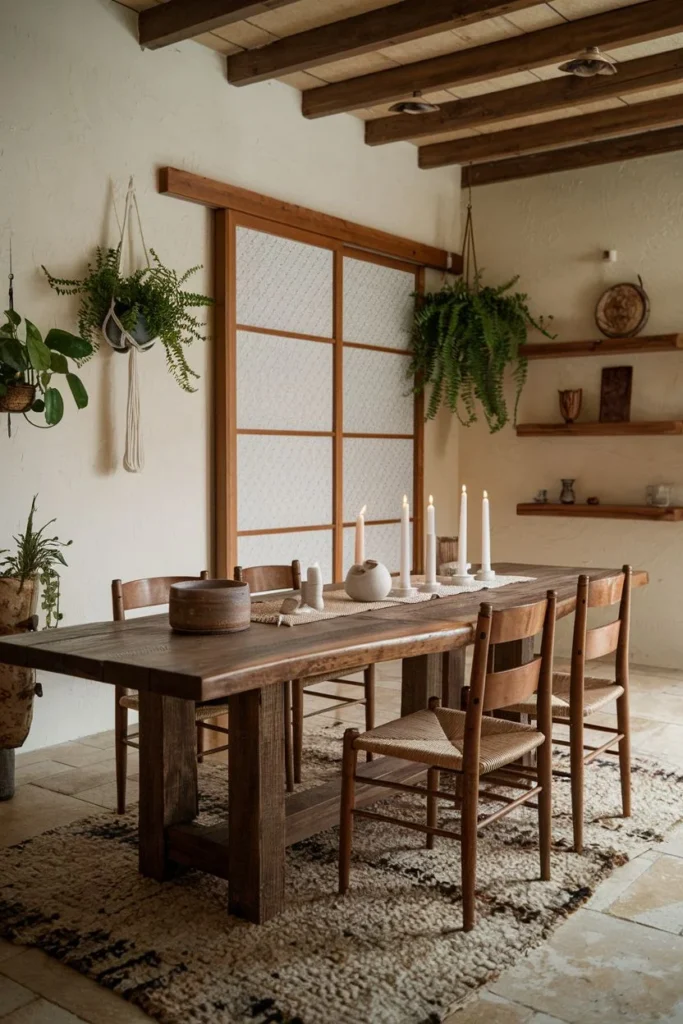
12. Pale Woods for Peace
Light-toned woods paired with soft wall colors create a fresh, natural dining room aesthetic. Keep decor simple with a few plates, a linen runner, and neutral tones throughout.
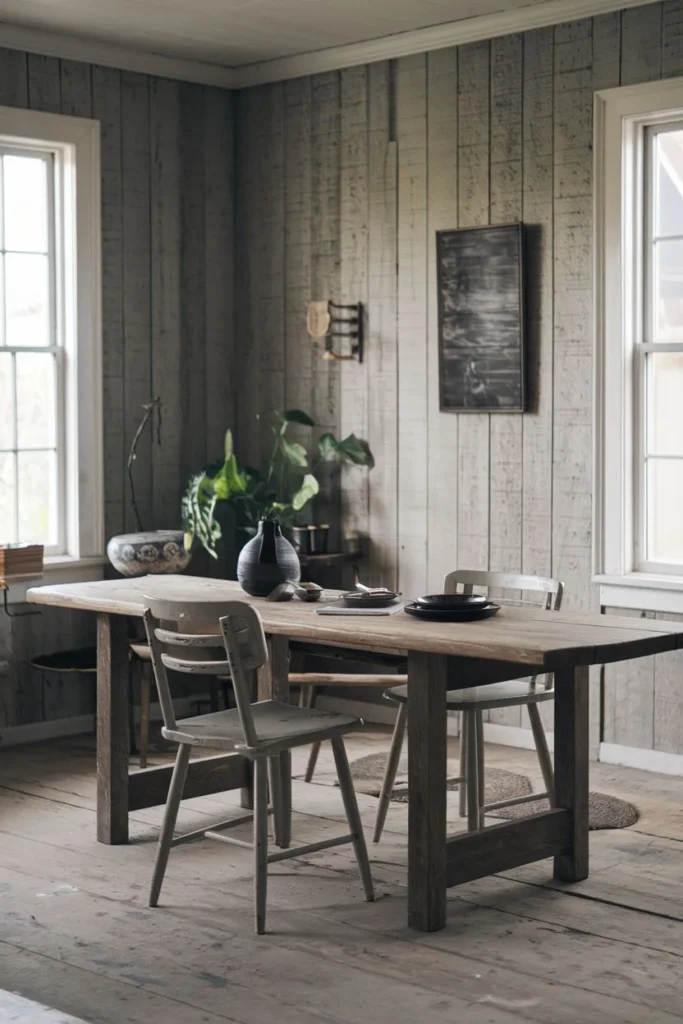
13. Ambient Modern Wabi Sabi Dining
Fuse modern style with Wabi Sabi roots using indirect lighting, layered shelving, and artisan ceramics. A dark wooden table grounds the space while greenery and sculptural decor add visual flow.
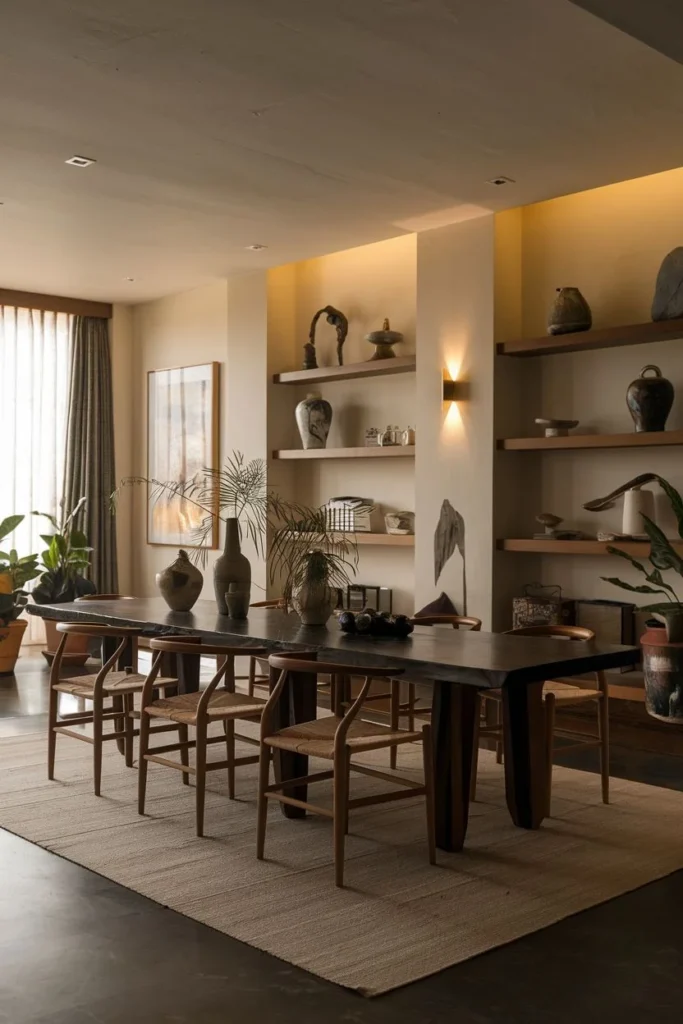
14. Traditional Meets Tranquil
Mix medium-toned woods, shoji screens, and rustic mirrors with soft textiles. A floral centerpiece and lantern lighting complete the look, honoring Japanese rustic design.
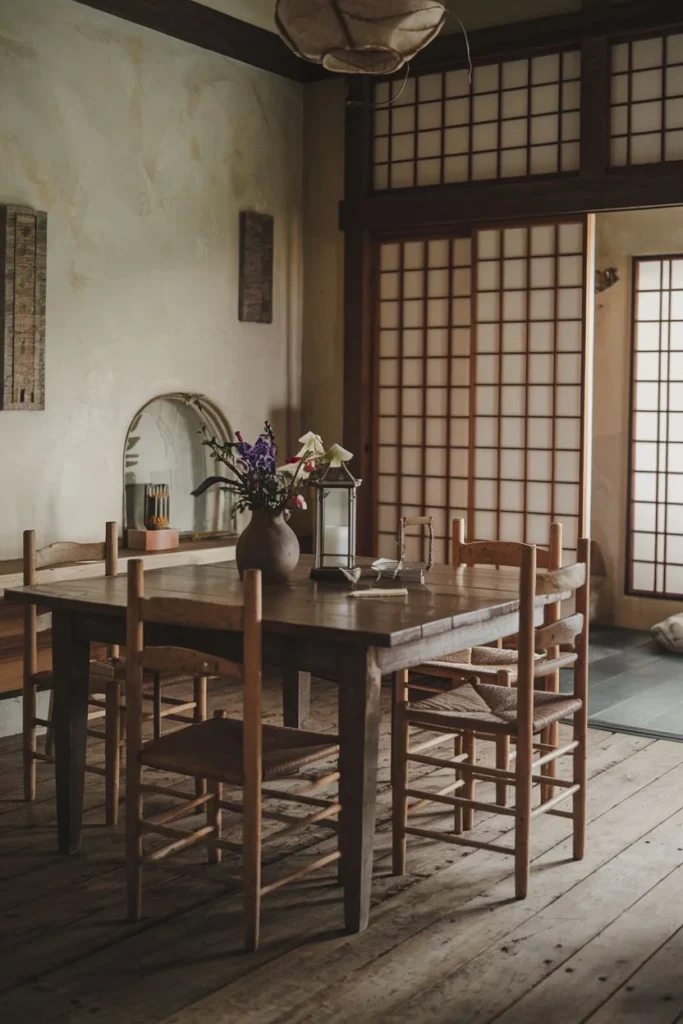
15. Industrial Elements with Organic Balance
Expose brick and textured plaster for an industrial Wabi Sabi look. Contrast with natural wooden furniture and soft greenery to create harmony between rough and refined.

16. Textile Layers & Tactile Surfaces
Layer your space with woven textiles, handmade pottery, and reclaimed wood furniture. A mix of dining chairs and wall-hung textiles enhances the lived-in, imperfect charm.
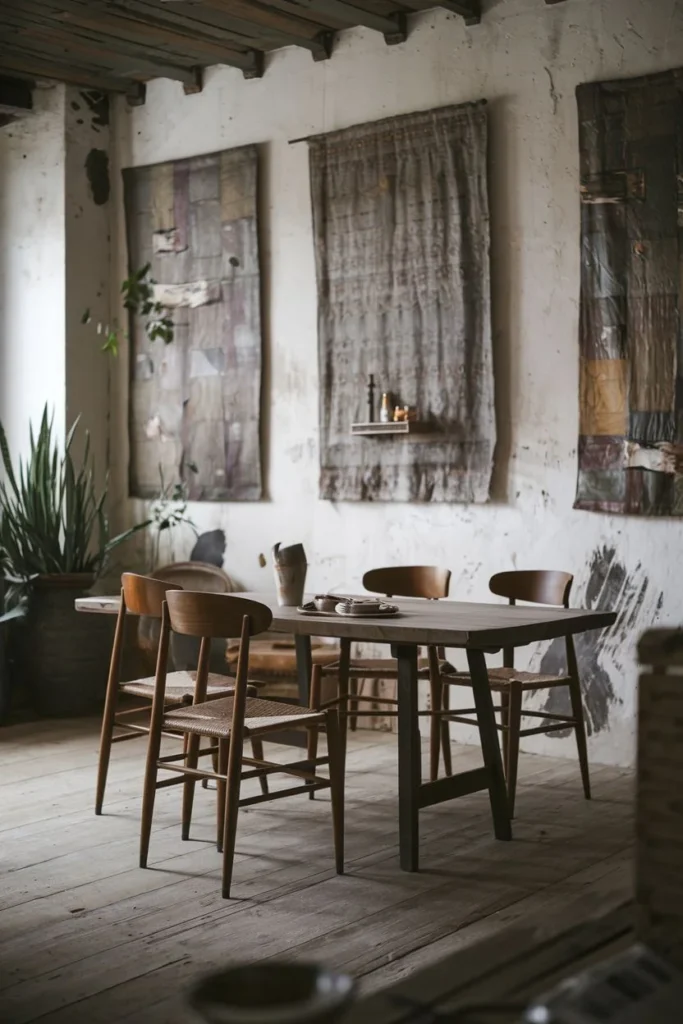
17. Sculptural Wood Statement Table
Choose a dramatic live-edge dining table with a sculptural base. Pair it with mixed chair styles and a bold floral arrangement for a nature-inspired dining setup full of character.
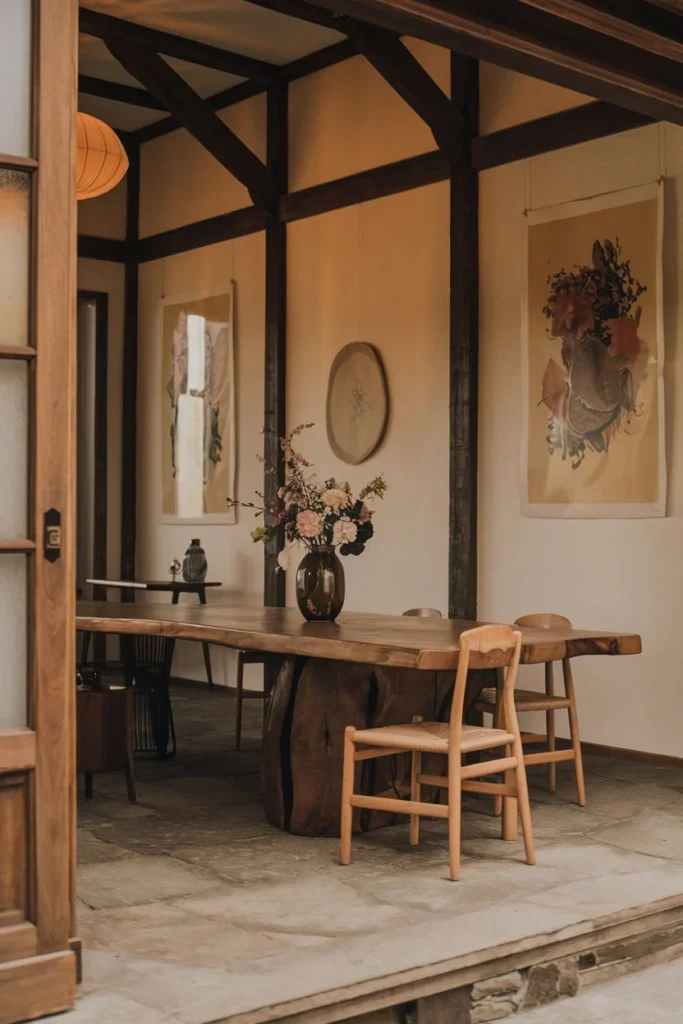
18. Vintage Soul
Incorporate vintage cabinets or buffets into your Wabi Sabi space. A large wooden table, distressed furniture, and exposed materials create an ambiance full of soul and history.
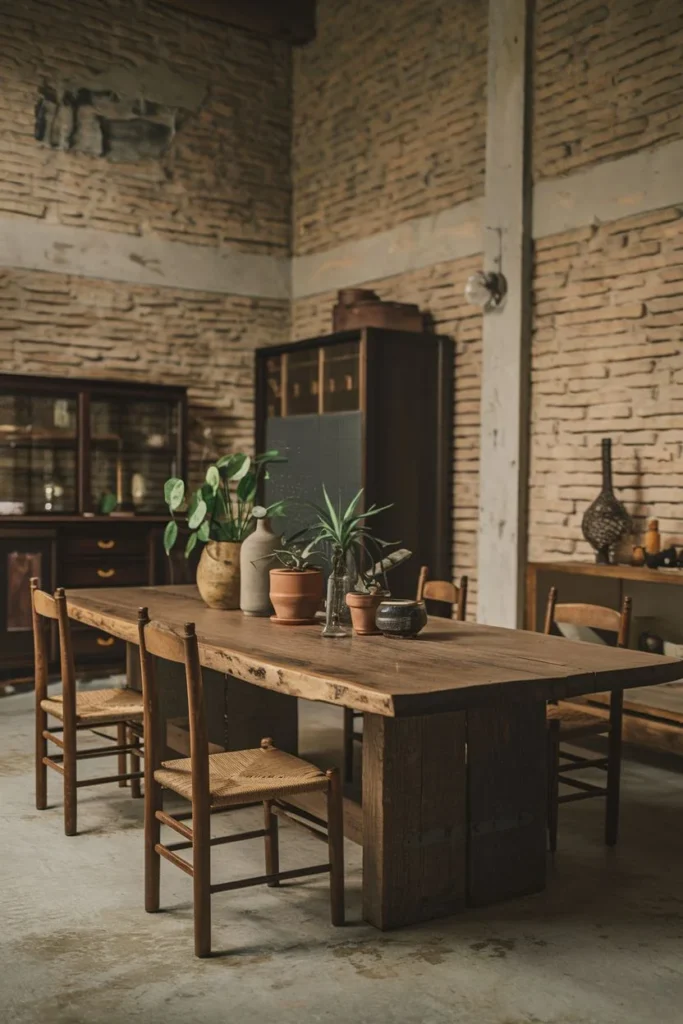
19. Brick & Beam Beauty
Mix natural wood tones with exposed brick walls and wabi sabi design textures. Add a woven rug, artistic plates, and a lantern centerpiece for an inviting, grounded environment.
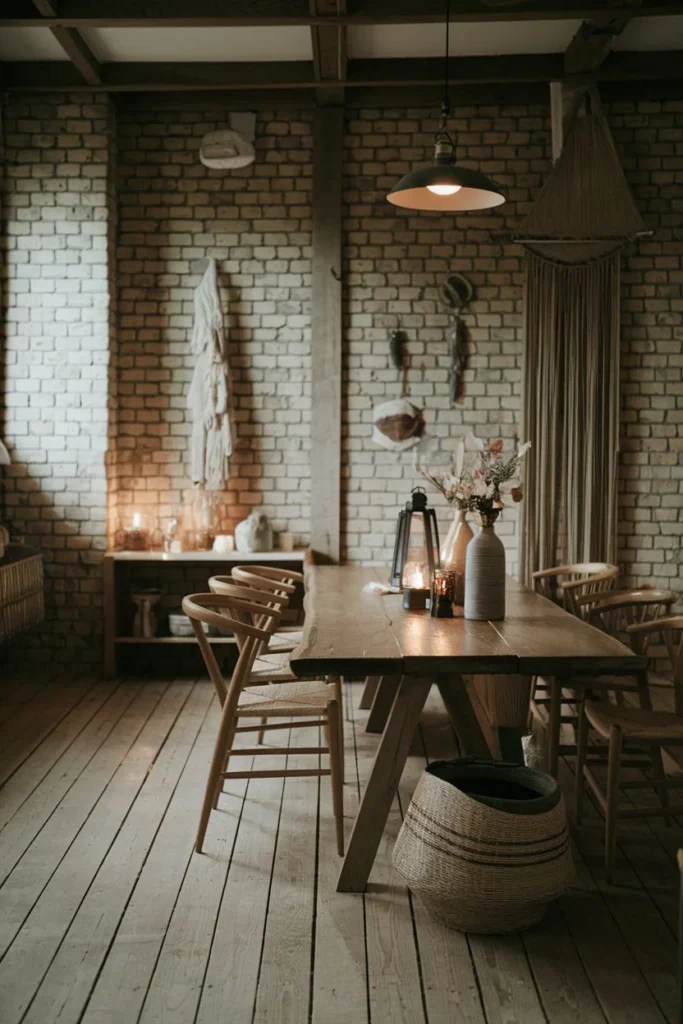
20. Outdoor Dining Zen
Set up a cozy Wabi Sabi-inspired patio with natural stone flooring and heavy wooden furniture. Use simple tableware, large green plants, and distressed finishes for an earthy elegance.
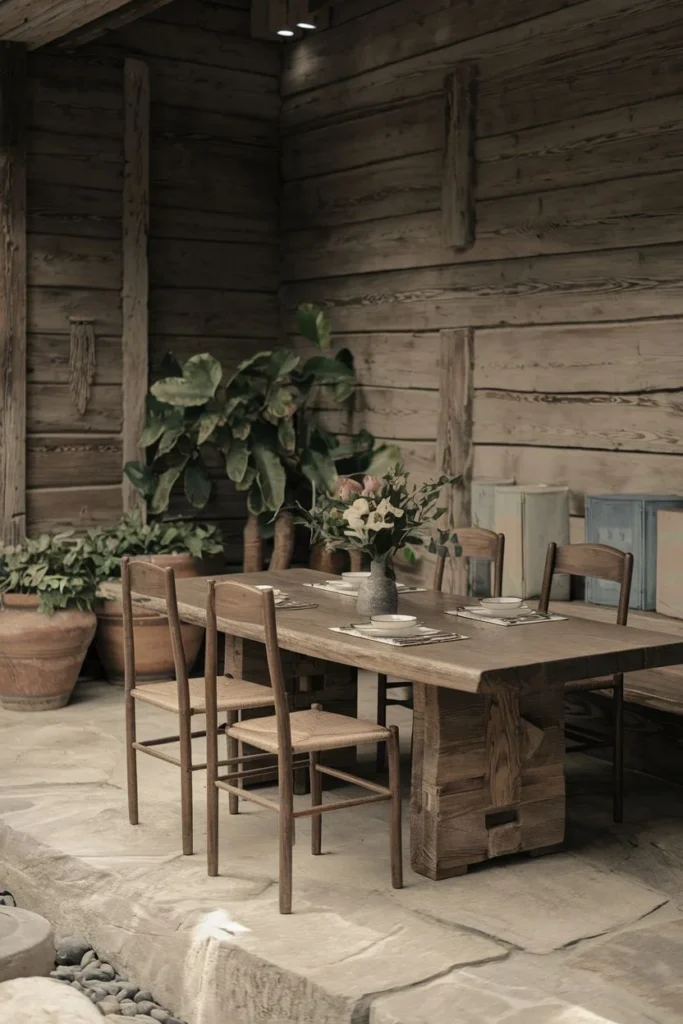
21. Bright & Grounded
Let natural light flood a dining area styled with neutral woods, fiber rugs, and woven decor. Wall textiles and vases filled with greenery ensure a calming, zen-like atmosphere.
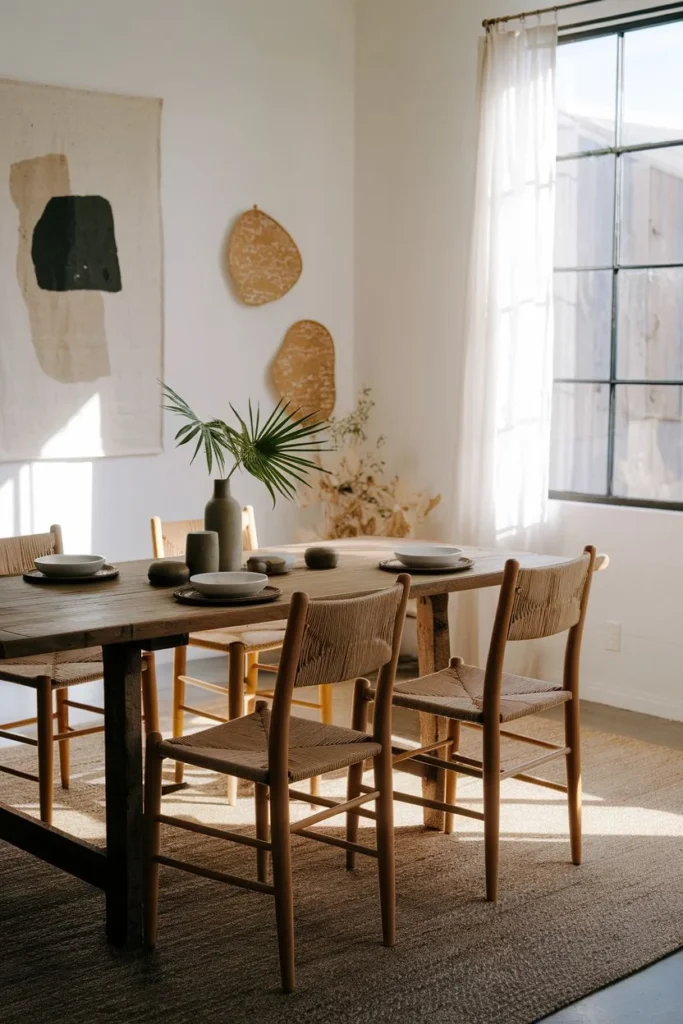
22. Stone & Timber Sophistication
Anchor your dining room with a large, sculptural wooden table on a natural stone floor. Wood beam ceilings, sliding doors, and clay ceramics reflect timeless Wabi Sabi Design influence.
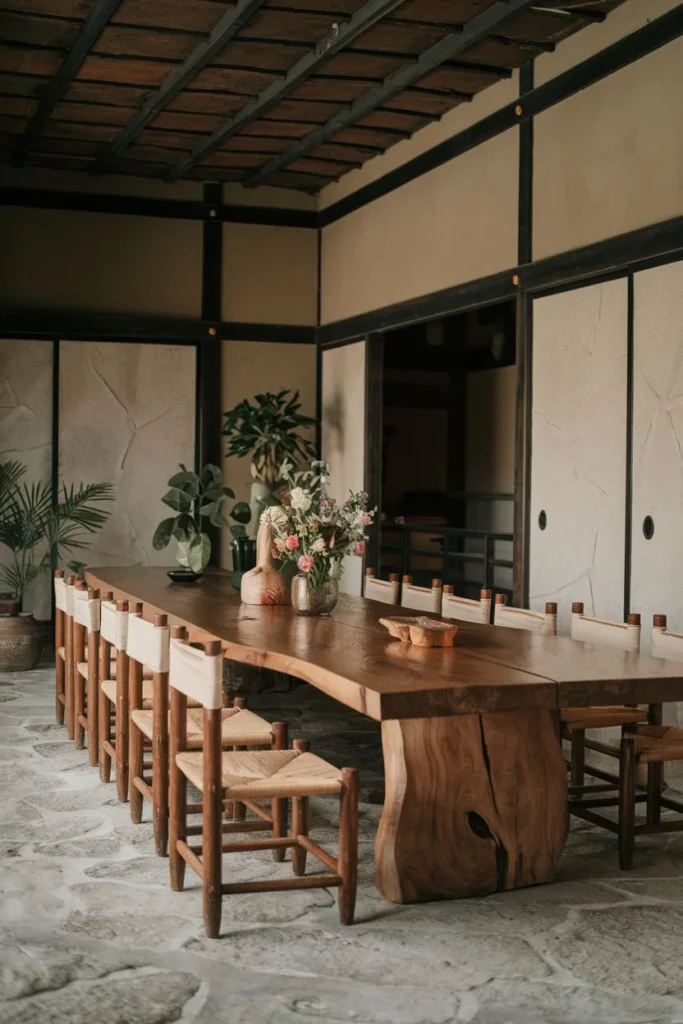
23. Warm Rustic Brick Setting
Use exposed brick to warm your space. Add medium-toned wood furniture, simple shelf styling, and a dark rug to create contrast. A few candles and plants seal the calming vibe.
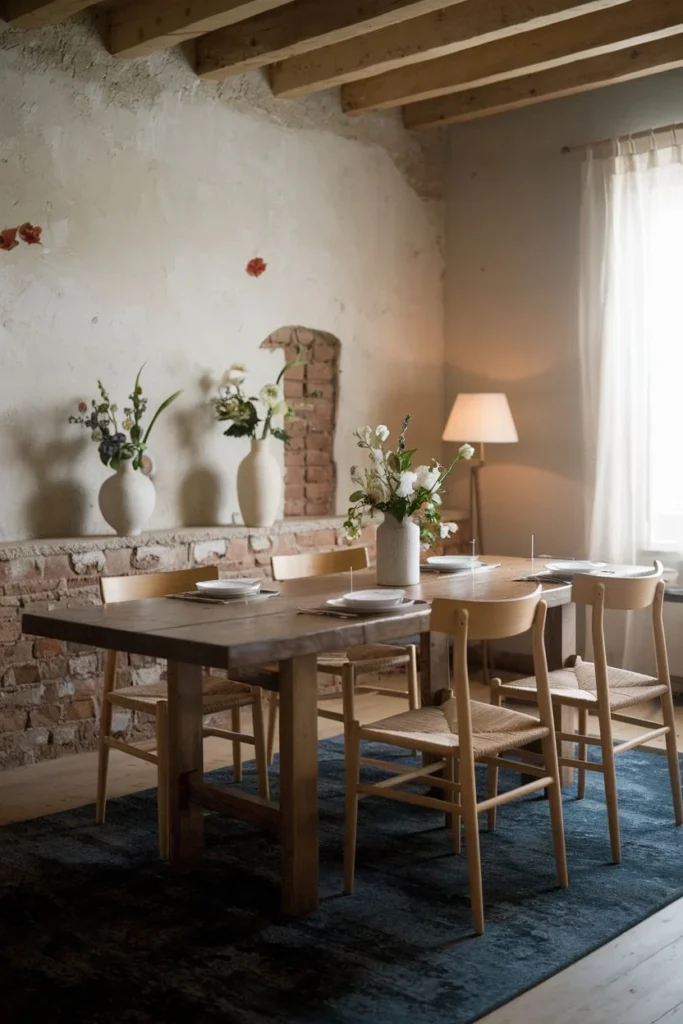
24. Character-Driven Dining with Distressed Charm
Pick a long painted table with a distressed look and mix-and-match wooden chairs. Hang landscape textile art, display organic objects, and let natural imperfections shine.
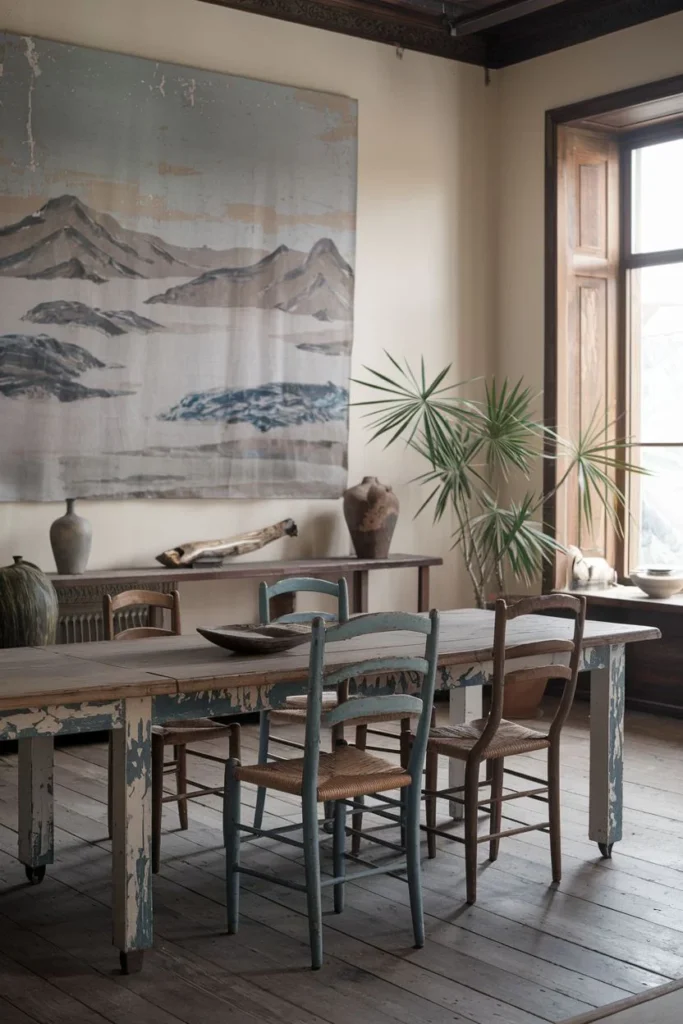
Conclusion
Designing a Wabi Sabi dining room is about more than aesthetic—it’s about embracing the imperfect, the natural, and the meaningful. Whether through weathered wood, handcrafted pottery, or soft, muted palettes, these ideas show how to turn your dining area into a sanctuary of simplicity and beauty.
By blending Japanese-inspired design, natural materials, and minimalist elegance, you create a dining room that feels timeless, peaceful, and deeply human.

